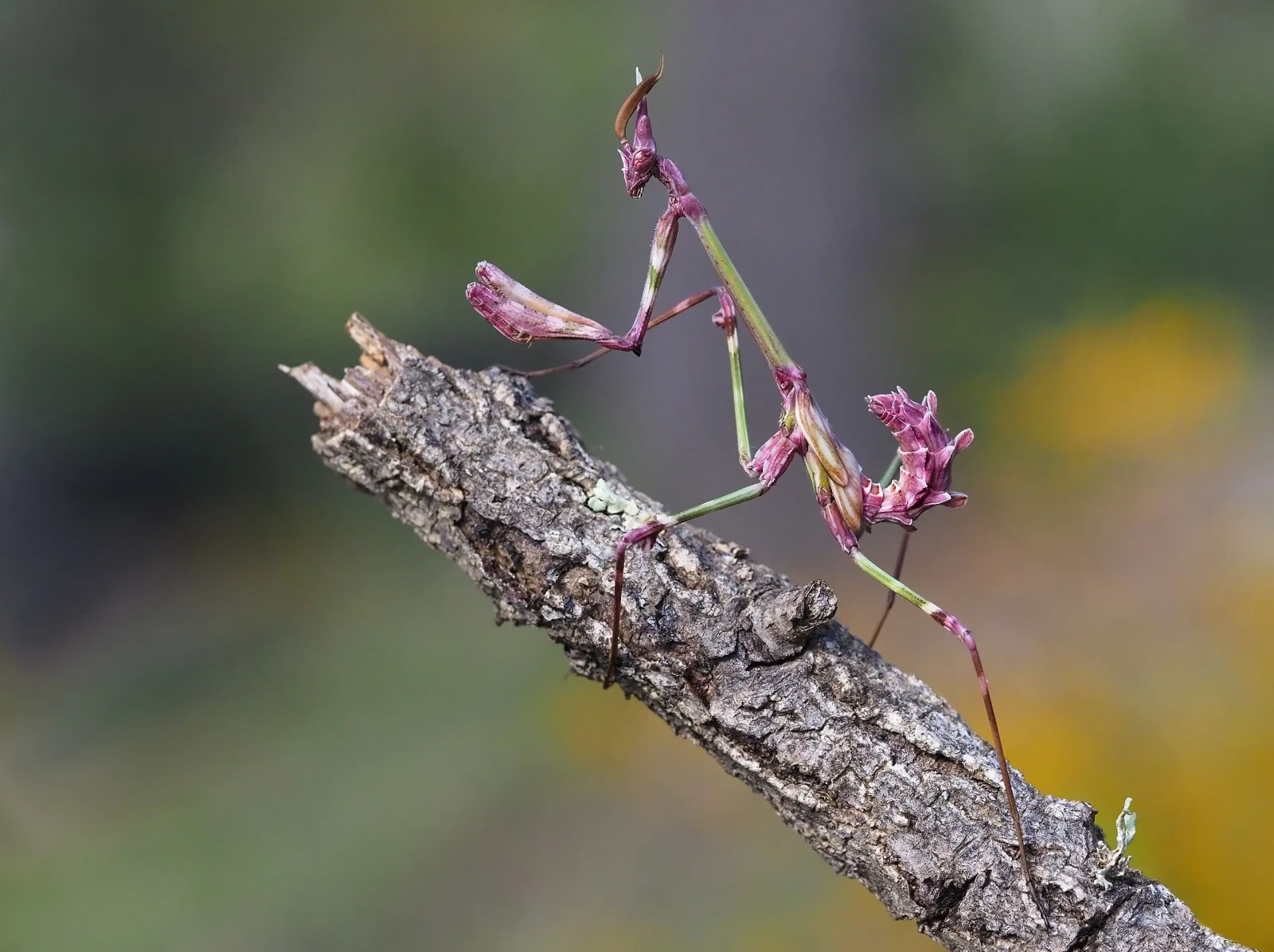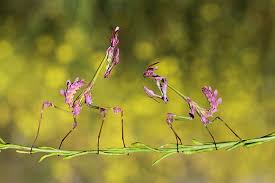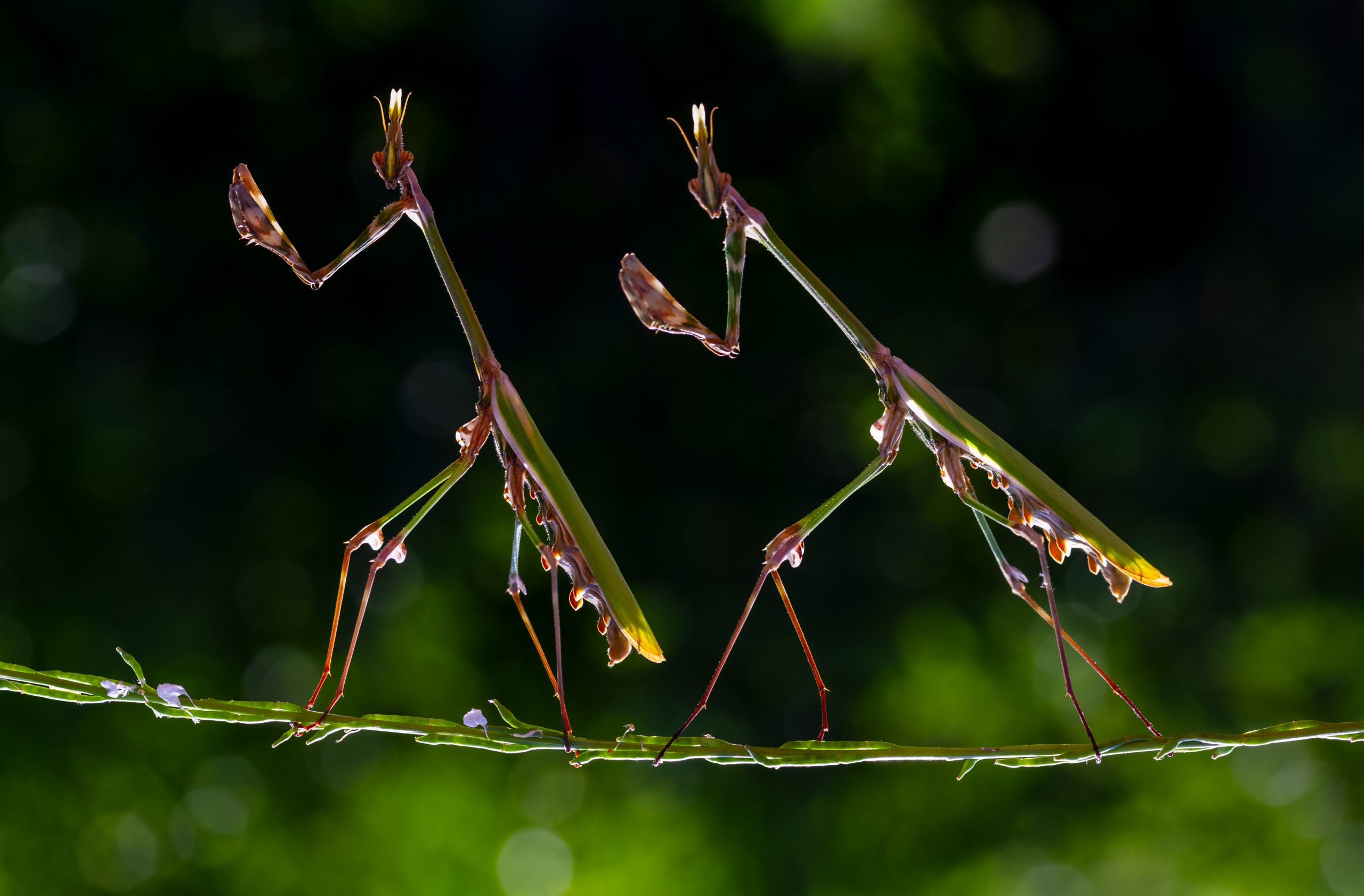Empusa Pennata: The Deadly Master of Camouflage

Empusa Pennata: The Deadly Master of Camouflage
Imagine walking through a dried-up, windswept field in southern Europe, surrounded by twisted twigs and desiccated flower buds. The world around you looks barren and lifeless, with nothing but the occasional flutter of wind to stir the air. Yet, within this seemingly empty landscape lies a predator so well-disguised, so perfectly hidden in plain sight, that it can wait for hours, days, or even weeks without being noticed. This predator is none other than the Empusa pennata, one of the strangest and most terrifying mantises on the planet. It looks like a dry flower, a lifeless stem, or a piece of plant debris, but in reality, it is an apex predator in its environment. For many creatures, it’s not a question of if they’ll become prey to this eerie mantis, but when.
Appearance: A Master of Disguise
Empusa pennata is a creature that demands attention, not for its size or obvious physical prowess, but for its exquisite, almost surreal, appearance. At first glance, this mantis doesn’t look like a traditional predator; it doesn’t have the vibrant greens or browns of typical mantises. Instead, it boasts a bizarre, skeletal appearance that blends seamlessly with the dry surroundings in which it lives. Its twisted, gnarled limbs resemble withered plant stems or dead twigs, while its horned head, which juts forward in a grotesque, alien-like shape, looks as though it belongs to a creature from another planet. Its long, slender body seems to melt into the environment, a perfect mimicry of the desiccated flower buds and branches it calls home.
The colors of the Empusa pennata range from pale browns and grays to light greens, allowing it to match its environment with precision. When it sits motionless among dried plant material, it can go unnoticed by both predators and prey alike. Even the shape of its body aids in this deception; its body segments often resemble dried, curled leaves or flower parts, making it nearly impossible to spot in the thick, arid vegetation it inhabits.
However, it’s not just the physical appearance that makes the Empusa pennata such a remarkable predator. Its deadly silence and patience turn it into an apex hunter, one that can be overlooked for days, waiting for the right moment to strike.
Behavior: Patience, Stillness, and Speed
Empusa pennata, like many other mantises, is a sit-and-wait predator. Its primary tactic is to remain completely still for long periods, allowing its camouflage to keep it hidden from both predators and potential prey. It’s often found perched on the dry, dead vegetation of its southern European habitat, staying motionless and blending into the surroundings. Its ability to remain perfectly still for extended periods is nothing short of impressive. This stillness allows the mantis to stay out of sight of insects and other creatures that would otherwise recognize it as a threat.
This predator’s patience is remarkable. Empusa pennata doesn’t hunt like a typical active predator. It doesn’t chase after its prey. Instead, it relies on ambush. The mantis will stay motionless for hours, sometimes even days, waiting for unsuspecting insects to wander too close. Its diet consists mainly of flying insects, such as moths and flies, which are attracted to the dry stems and buds where the mantis hides. The insects are unaware of the lurking predator, and by the time they realize something is wrong, it’s far too late.
When a victim comes within range, the mantis strikes with an astonishing speed that belies its seemingly delicate appearance. Its powerful forelegs, which are equipped with spines and sharp, serrated edges, move lightning fast. These forelegs are designed to grab and hold prey, trapping it with extreme efficiency. Empusa pennata’s strike is often so rapid and precise that prey is immobilized before it even has a chance to react. Once the mantis has its prey securely in its grip, it begins to consume it alive, tearing apart its meal with sharp mandibles.
The mantis’s ability to remain still for hours, then strike at lightning speed, is what truly makes it a formidable predator. Its prey is often completely unaware of the danger lurking just inches away until the mantis strikes. This ambush-style hunting technique is perfected by Empusa pennata, which is why it is so effective at capturing its prey.
Hunting: The Deadly Dance of Nature
The process of hunting for Empusa pennata is not just about patience and speed; it also involves an intricate understanding of timing and positioning. Empusa pennata often perches in a way that makes its prey approach it from the perfect angle. When prey insects fly nearby, attracted to the plant life where the mantis is hiding, the mantis must carefully time its strike. It can sense the vibrations caused by the movements of the prey and can detect their proximity. The mantis’s specialized vision also helps it track the movement of prey, ensuring that its strike is as efficient and accurate as possible.
Once the mantis has captured its prey, it typically begins to eat immediately. The forelegs, which are also equipped with sharp claws, help the mantis to hold the insect firmly in place while it feeds. The mantis’s diet can include a variety of smaller insects, but it is especially adept at catching nocturnal insects such as moths. The mantis often strikes at night when its prey is most active and unaware of its presence.
The Role in Ecosystem: More Than Just a Predator
While the Empusa pennata is undeniably a deadly predator, it also plays an essential role in its ecosystem. As a predator of smaller insects, it helps regulate insect populations, ensuring that no single species dominates the environment. In doing so, it contributes to the overall balance of the ecosystem, preventing the overgrowth of plant-eating pests that could damage the flora. In this way, the mantis plays a crucial role in maintaining the health and stability of the ecosystems where it resides.
Furthermore, the Empusa pennata itself is a prey species for larger animals, including birds of prey. While it may be an efficient and formidable hunter, it is not invulnerable. Its excellent camouflage protects it from many potential predators, but it still faces dangers from birds and other larger creatures. In this sense, it is both a predator and prey, a delicate balance that is found throughout nature.
A Unique Survivor
Empusa pennata’s ability to adapt to its environment is a testament to the incredible diversity and ingenuity found in nature. Its physical adaptations, including its camouflage and specialized hunting techniques, make it one of the most fascinating predators in the insect world. Despite its unusual appearance, it is a highly effective predator, using its physical features and behavior to survive in a competitive and dangerous world.
This mantis’s remarkable ability to blend in with its surroundings and remain motionless for hours is a key survival tactic. Its horned head and twisted limbs may seem strange at first, but these features help it evade detection while waiting for its next meal. Its precision strike, which is both fast and deadly, makes it a formidable hunter in its own right. The Empusa pennata’s unique combination of camouflage, patience, and speed makes it one of nature’s most astonishing predators, capable of thriving in the harsh, dry environments of southern Europe.
For anyone lucky enough to encounter this strange mantis in its natural habitat, it serves as a reminder of the creativity and beauty of nature. Empusa pennata isn’t just a predator; it’s a work of art in motion, an embodiment of survival and adaptation in one of the most extreme environments on Earth.











